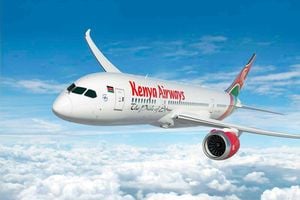The nightmare of rolling out health insurance scheme for civil servants

HEZRON NJOROGE | NATION
Civil servants at a recent Rapid Results Initiative meeting at the Kenya Institute of Administration. The roll-out of a health insurance plan for the Public Service is now uncertain.
Uncertainty surrounds a plan to introduce a new health insurance scheme for civil servants as the government grapples with the headache of crafting the largest ever medical insurance scheme in East Africa.
Originally planned to begin on August 1, the plan had to be postponed for the second time as the government ponders the complex details of formally contracting a group of insurance companies to underwrite the business.
The stakes are high because the company that wins will receive the largest insurance premium in the history of the insurance market in Kenya. The sheer size and complexity of the assignment is mind-boggling.
The business is going to double the health insurance market in Kenya. In total, the scheme will provide in-patient and out-patient medical insurance to 219,000 civil servants.
But the complexities and magnitude are better appreciated by doing some simple mathematics.
If you add three dependants each for every civil servant as allowed under the new scheme, the total number of the insured population under the scheme comes to 876,000.
It also means that if each member goes to hospital four times in a year as per the industry average, it totals 3.5 million out-patient visits in a year.
And, 3.5 million individual visits a year, including Sundays, works out to 9,600 claims that will be generated per day —making administration of the scheme a logistical nightmare.
If you assume each out-patient visit (medical consultation plus drugs) will cost Sh2,000, it means the claims will amount to a whopping Sh7 billion.
Clearly, the government is going into one of the riskiest experiments since the collapse of the defunct Kenya National Assurance in 1991.
How does the government want to fund the medical scheme?
It is a simple formula. First, withdraw the existing monthly medical allowances for civil servants.
Second, use some Sh4.5 billion the government presently allocates to monthly medical allowances to purchase health insurance for civil servants. Currently, that allocation covers payment of a monthly out-patient medical allowance, re-imbursement of out-patient expenses, exclusive of drugs expenses and doctors’ fees and, finally, provision of medical ex gratia assistance of up to 75 per cent of in-patient expenses.
The ex gratia payment is made at the discretion of the government.
In reality, the monthly out-patient allowances to civil servants, paid together with monthly salaries, range from Sh375 to Sh2,490 per month. But crafting and rolling out a financially sustainable medical scheme for the 219,000 civil servants and their dependants is proving to be difficult for the government.
It would appear that the biggest headache is how to determine the premium which can sustainably fund the gigantic claims the massive scheme is inevitably going to generate. Initially, it was assumed that the appropriate premium would come through public tendering process where the major insurance companies in the medical business would compete.
Two months ago, the government put out a tender asking insurance companies to organise themselves into consortia and bid for the big job. The government only received two bids, making it difficult for proper competition to take place.
Complicating the matter further, the two consortia of insurance companies presented sharply contrasting bids. One group, comprised mainly of the big players in medical insurance business, quoted a premium of Sh12 billion per annum and the other, composed of small players, presented a bid of Sh4 billion for the same service.
The wide disparities between the two offers only served to compound the puzzle of how to determine the appropriate premium for the job. Insurance experts were left wondering whether the two groups were reading from the same tender documents.
Several questions arose. What if the scheme collapses under the weight of a mountain of claims? Insurance services are paid for under the cash-and-carry rule, meaning the government must release the billions to an insurance firm at one go.
If the money runs out after six months due to unexpected levels of claims, what protection do the government and its employees have? Where is the ombudsman to make sure that hospitals do not turn civil servants away because of the so-called exclusions?
What happens to a civil servant working in areas where there are no hospitals? How fair is a medical scheme that treats employees working in Lokichogio and Nairobi the same way?
As a class of business, medical insurance has been incurring huge losses mainly due to fraudulent claims and the high administrative expenses. According to statistics by market regulator, the Insurance Regulatory Authority, this class of business made an underwriting loss of Sh235.8 million in 2009 compared to an underwriting profit of Sh33 million in the previous year.
Fresh evidence has also emerged showing that the quandary the government finds itself in results from its failure to heed expert advice by the actuarial consultants, Hymans Robertson, it had hired in 2002 to study the case for such a scheme and make recommendations.
According to a cabinet memorandum, the basis of which the government approved the scheme, ministers Dalmas Otieno (Public Service) and Uhuru Kenyatta (Finance) – the two signatories of the cabinet memo – had presented the case as if what they had tabled was from the recommendations of the experts.
The Sunday Nation has learnt that the government ignored the recommendations of the actuarial consultants.
For instance, according to Hyman Roberson, a medical insurance scheme for all civil servants – providing both out-patient and in-patient services – would require funding to the tune of Sh12 billion in terms of yearly premiums.
The level of premiums estimated in the actuarial study date as far back as July 2002 – reflecting prices that were prevailing 10 years ago and which do not therefore reflect the reality of medical inflation.
Going by the report of the actuary, a copy of which has been seen by the Sunday Nation, the viability of the plan is in question.
The cabinet paper deviated from what the actuaries had said in many other ways.
Indeed, the experts did not recommended an insurance scheme providing for both in-patient and out-patient services. Instead, they recommended a medical aid scheme for civil servants covering both in-patient and out-patient services, where limits are set and that is run by a board of trustees.
The second preferred option by the actuary was a self-insurance scheme for civil servants seeking in-patient services but retaining the monthly allowances that are paid currently to cover out-patient services.
The actuaries recommended another option where only in-patient services are covered by an insurance company while the government continues to pay the existing monthly allowances to civil servants.




